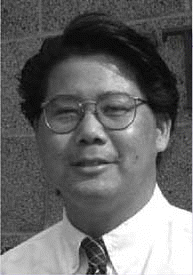OCT has a depth of penetration of up to three millimeters and the resolution is much finer than with other imaging modalities, Dr. Armstrong said. The diameter of a red blood cell is about eight microns, and the best you can get with CT scans would be a millimeter, which would be a hundred times less resolution, he added. CT, ultrasound, and MRI all have resolutions that are at least an order of magnitude less than that available with OCT. Current research OCT systems have resolutions as low 10 microns-and there are systems in development that will have resolutions as low as one to two microns.
Explore This Issue
September 2006I think the most important thing that OCT of the head and neck allows you to determine is the integrity of the basement membrane. – -Brian J. F. Wong, MD, PhD
OCT is an infrared imaging technology that is very similar in application to ultrasound, Dr. Armstrong said, but instead of using sound waves, light waves are used. The OCT procedure shines light into the tissue using infrared light at low power levels and then examines the backscattering that comes from the reflections to create a picture of the tissue structure.
The OCT device uses a super-luminescent diode, Dr. Armstrong added, which produces infrared light. The device is passed down a small, approximately one-millimeter optical fiber that is housed inside a plastic sheath, which is in turn housed inside a metal tube.
To deliver the OCT device, Dr. Wong said, an endoscope, a probe, a microscope, or a hand-held device can be inserted into the mouth. It really depends on the clinical application, but the best quality images are obtained using a probe system, a pencil-like device that can be placed in direct contact or near contact with the tissue, he added.
In most present experiments, Dr. Armstrong said, the device has been delivered through an endoscope to patients who are under general anesthesia. The ultimate longer term goal is to develop a way to get images and get data on a person who is awake in the office. This would involve having the patient hold still with the tongue protruded and would probably require a topical anesthetic.
What the Technology Provides
With the technology we have, we can see the architecture of the tissues, Dr. Armstrong said. OCT provides such details as the thickness of the epithelial layer, the location of glands and blood vessels, and disruption of the basement membrane.
OCT has incredible value for looking at thin-layered structures, Dr. Wong said. It is of extreme value in organ and tissue sites where a biopsy of that organ could lead to the destruction or severe functional impairment of the organ. Anything that is done to physically perturb the vocal cords can change the intrinsic modes of vibration, altering ultimately the quality of the voice, so having a high resolution imaging technology to look at the vocal cords has extreme utility and value. OCT may provide the ability to guide the decision to perform a biopsy and provide information on the most beneficial placement of the biopsy.


Leave a Reply